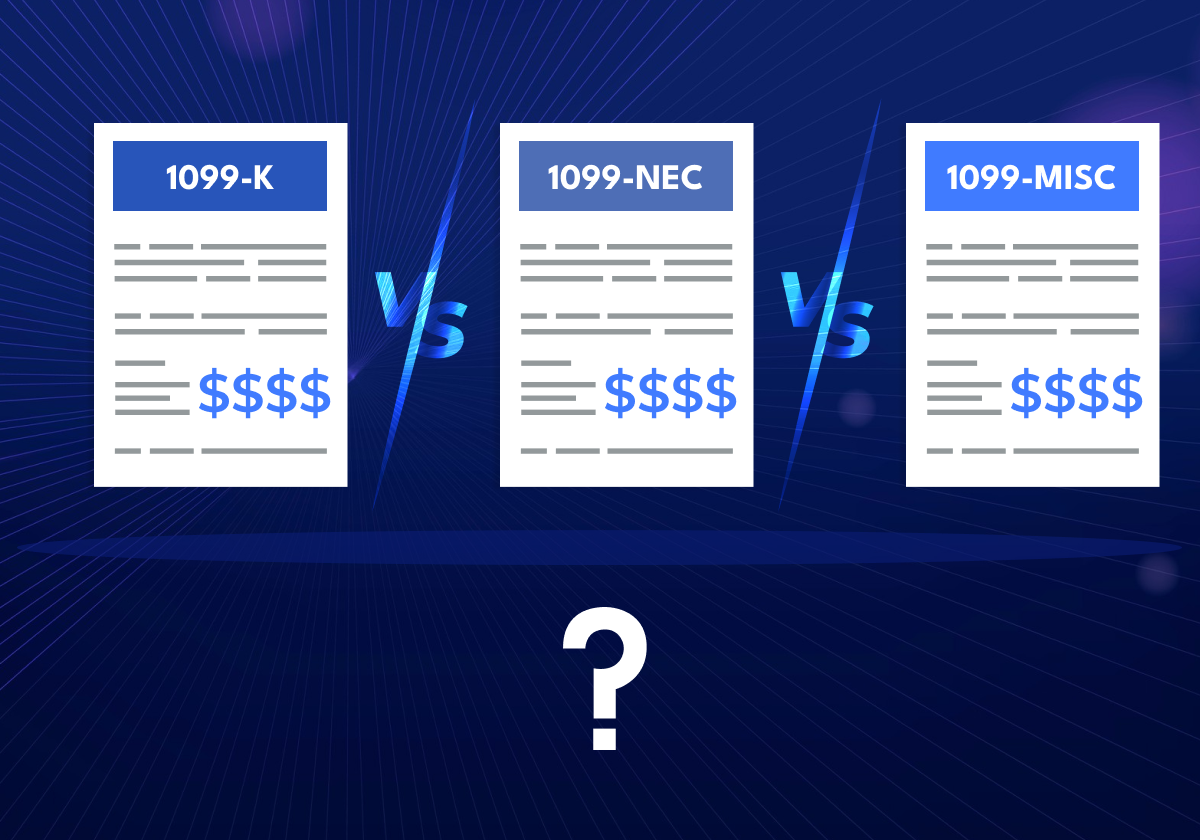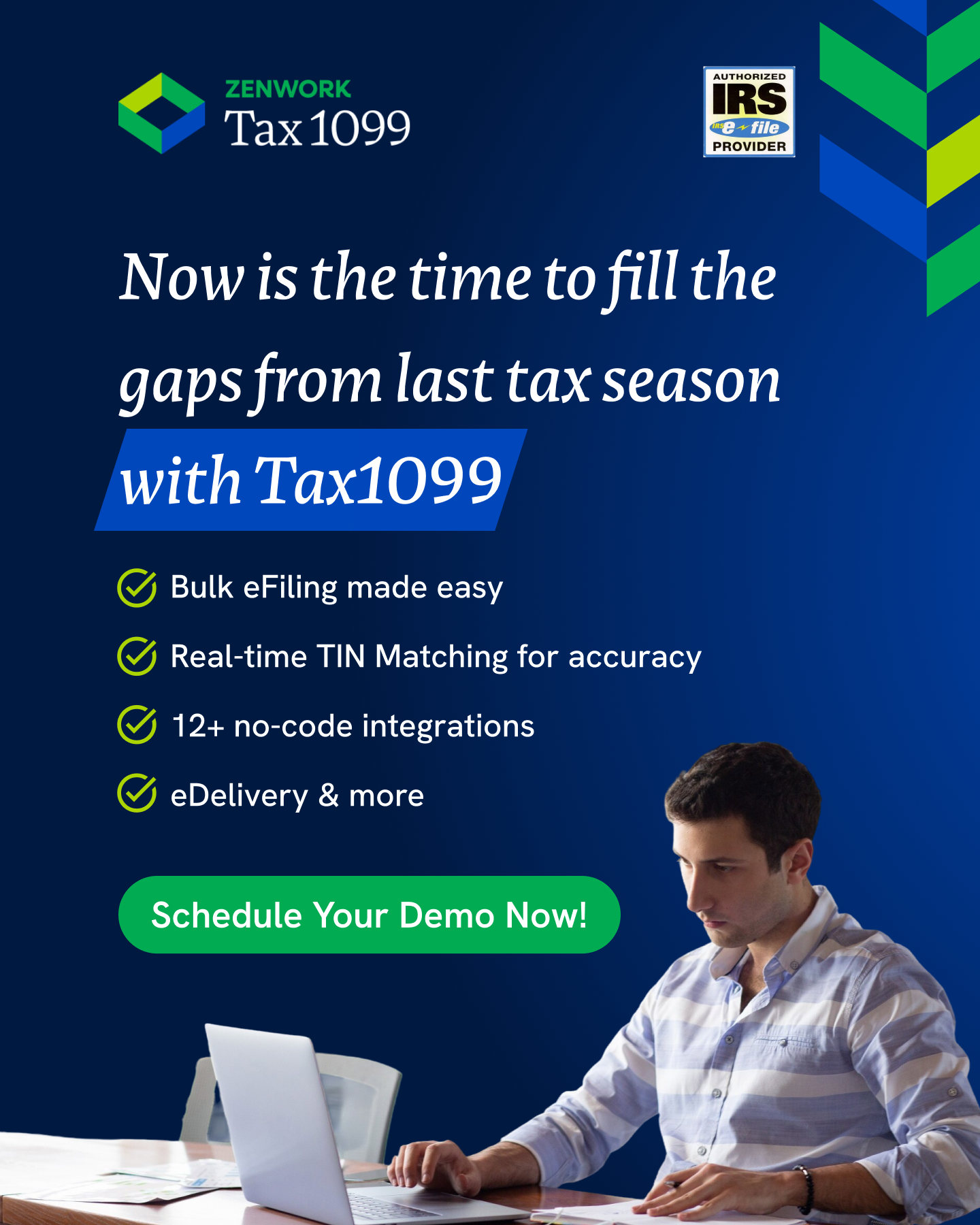Note: IRS delays the rollout of the $600 threshold for 1099-K reporting.
Learn More
The threshold for Form 1099-K remains at $20,000 with a 200 transaction limit for the year 2023. This delay designates 2023 as a transition period, maintaining the existing requirements for reporting.
The IRS created the information reporting program in 1918 to report salaries paid in excess of $800. Over the years the program has expanded to include over 20 different forms, each used to collect information on different types of activity that impact your or your business’ tax return. For instance, freelancers and contractors might receive a 1099-NEC from a client or business as a documented record of the income they earned from that specific entity during the tax year.
Join over 500,000 companies instantly handling information reporting with Tax1099.
What is Form 1099-MISC?
Form 1099-MISC, or the Miscellaneous Income form, is an IRS form issued by individuals or businesses, to notify the IRS of payments made to a vendor or individual for various types of activity. These payments can include activities such as rent, healthcare payments, awards, prizes, earnings from fishing boat sales, attorney fees, and other payments. It is the responsibility of the person or business that has paid (in information reporting this entity is called the payer) any amount that exceeds $600 or more to any individual entity (the entity is called the recipient in information reporting jargon). There are a bunch of exceptions, for instance:
- Box 2 – Royalties: This box reports payments of $10 or more made to property owners for using their property. It includes payments for using intellectual property as well.
- Box 4 – Backup Withholding: Any payment subjected to Backup Withholding rules, regardless of whether it’s less than $600, this box reports that withheld amount.
- Direct sales totaling $5,000 or more, except when they occur at a permanent retail location.
What is Form 1099-NEC?
Form 1099-NEC (non-employee compensation) is an Internal Revenue Service form designed to report compensation paid to self-employed individuals. This category includes independent contractors, freelancers, gig workers, and other individuals who are not on a company’s regular payroll. Recipients of these payments will receive a 1099-NEC form from each entity or individual that paid them $600 or more for services provided throughout the calendar year.
After receiving a 1099-NEC for your earnings, you can reduce your taxable self-employment income by claiming deductions on Schedule C.
Need assistance with your 1099-NEC? Tax1099 is here for you!
What is Form 1099-K?
Form 1099-K, known as the Payment Card and Third-Party Network Transactions form, is utilized by payment settlement entities (responsible for reporting the payments made to participating payees) to report the total value of reportable transactions for each participating payee. These transactions occur through payment card transactions (like credit cards, debit cards, and stored value cards) or third-party network transactions.
Recipients will receive Form 1099-K under the following circumstances:
- If they have received payments through payment cards, including credit cards, debit cards, and stored value cards.
- If they have received $600 or more in payments through a payment app or an online marketplace. These payments can include proceeds from selling personal items, goods, renting property, or providing services through platforms like payment apps, auction sites, online marketplaces, real estate marketplaces, taxi or car rental platforms, ticket exchange or resale sites, crowdfunding platforms, and freelance marketplaces.
It’s crucial to keep in mind that personal payments, such as gifts received for birthdays or sharing rent with a roommate, are not considered taxable income. Therefore, these types of payments should not be reported on Form 1099-K.
What’s the difference: 1099-K vs 1099-MISC vs 1099-NEC
Form 1099-K, Form 1099-NEC, and Form 1099-MISC may appear similar, but they serve distinct purposes when it comes to reporting payments to independent contractors. Here’s a breakdown of their key differences:
Payment Methods:
- Form 1099-K: Primarily covers digital payments, including transactions made through credit cards, debit cards, stored value cards, and payment platforms like PayPal or Stripe.
- Form 1099-NEC and Form 1099-MISC: Cover payments made through various methods, including ACH transfers, cash, or traditional paper checks.
Issuer:
- Form 1099-K: Typically issued by payment processors or third-party entities that handle electronic transactions. It is not issued by the businesses or individuals making the payments.
- Form 1099-NEC and Form 1099-MISC: Issued by the businesses or individuals who hire and pay independent contractors directly.
Here’s a table summarizing the key differences between Form 1099-K, Form 1099-NEC, and Form 1099-MISC:
| Payment Type | Payment Method | Associated IRS Form | Who Files It |
| Payments to Non-Employees for Services (e.g., Gig Workers, Independent Contractors, Freelancers) | Cash, Check, Direct Deposit, ACH | Form 1099-NEC | Payer (Employers, Individuals) |
| Payments to Non-Employees for Services (e.g., Gig Workers, Independent Contractors, Freelancers) | Credit Card, Debit Card, Stored Value Cards, Payment Apps | Form 1099-K | Payment Processor (Payment Card Companies, Payment Apps, Online Marketplaces) |
| Rent, Prizes and Awards, Health Care Payments, Proceeds from Fishing Boat Sales, Payments to an Attorney, Crop Insurance Proceeds, Section 409A Deferrals, Nonqualified Deferred Compensation | Cash, Check, Direct Deposit, ACH | Form 1099-MISC | Payer (Employers, Individuals) |
| Rent, Prizes and Awards, Health care payments, Payments made to an attorney, Crop insurance proceeds, Section 409A deferrals, Nonqualified deferred compensation | Credit Card, Debit Card, Stored Value Cards, Payment Apps | Form 1099-K | Payment Processor (Payment Card Companies, Payment Apps, Online Marketplaces) |
How to eFile your Form 1099 for 2023 with Tax1099 in three easy steps:
- Import Payee Data: Quickly gather your payee transaction data using integrations. You can even use API services to save time on manual data entry.
- Verify TIN and Data: Check the accuracy of your 1099-K form data. Ensure your transaction details match what’s on Form 1099-K. Correct any errors, including incorrect TINs or payee names.
- eFile Form 1099: After reviewing and confirming your reports, simply click ‘eFile’ to transmit your returns directly to the IRS instantly.
Get started with Tax1099 today and stay compliant!



